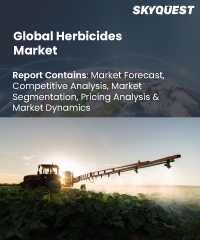
Report ID: SQMIG15A2110

Report ID:
SQMIG15A2110 |
Region:
Global |
Published Date: February, 2024
Pages:
157
|
Tables:
90 |
Figures:
76
In 2021, Asia-Pacific is expected to have the biggest share of the market. North America is the world's second-largest herbicide consumer. Environmental laws in the developed economies of North America and Europe, on the other hand, are likely to limit market growth in these regions. The Asia Pacific region dominated the global herbicides market in terms of both production and consumption, and this trend is projected to continue in the near future. The Asia Pacific region is home to two of the world's most populous countries, India and China. In terms of GDP growth rate and rising disposable income, these regions are also among the key growing economies. Herbicide demand in Asia Pacific is predicted to be driven by the region's large population and rapid economic growth.
South America region also had one of the greatest market share is expected to grow even more in the next five years. Furthermore, because South America has less rigorous laws than other countries, significant players have expanded in this region. The South America and Middle East & Africa region is predicted to be one of the fastest-growing herbicide markets. owing to rising demand for various crops in the region, including corn, beans, and cashews, among others.
Our industry expert will work with you to provide you with customized data in a short amount of time.
REQUEST FREE CUSTOMIZATIONHerbicides Market size was valued at USD 30.32 billion in 2019 and is poised to grow from USD 31.59 billion in 2023 to USD 45.75 billion by 2031, growing at a CAGR of 4.2% in the forecast period (2024-2031).
Want to customize this report? This report can be personalized according to your needs. Our analysts and industry experts will work directly with you to understand your requirements and provide you with customized data in a short amount of time. We offer $1000 worth of FREE customization at the time of purchase.

Report ID: SQMIG15A2110